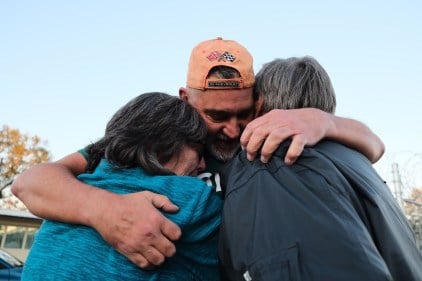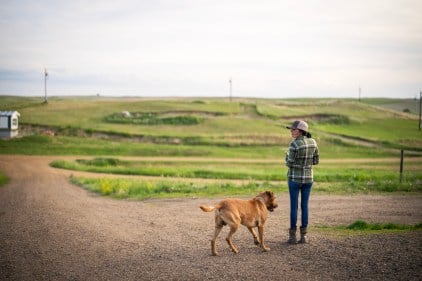She was still small enough to climb on her mother’s back, too little to step from the family boat without help, when the violations began. “Touching games” led by older men with big smiles at her family’s fish camp, across the water from Kotzebue, a regional hub of 3,000 people known as the “gateway to the Arctic.”
From those early years into her adulthood in distant Anchorage, Tia Wakolee, 46, says she was molested, raped or stalked nearly 30 times. She never reported the abuse to law enforcement.
The act of reporting assumes you know you were wronged.
As a child, Wakolee learned to blame herself. She traces the pattern to a single instance when she was about 7. Her grandmother walked in on her husband, Wakolee’s grandfather, molesting her behind the garage doors. (Both have since died.)
“My pants were down, and she ripped me off of his lap and took me into the house,” Wakolee said. “About halfway into the house, she threw me up against the stairs and disowned me. … I didn’t understand what ‘disowned’ meant.”
All she knew was that something bad had happened and she was the one being blamed.
A few years later, an elementary school teacher learned of the abuse at home and promised to help. It didn’t happen. She never learned why, but her abuser learned that she had told. She never spoke up again, and that child’s sense of guilt silenced her as an adult.
“Everything after that, it was always my fault,” Wakolee said. “You don’t know any better, nobody tells you any better. Everybody goes with it. It’s the environment, it’s just acceptable.”
No one said it out loud, but year after year she received the same message from older women around her: “This is what we go through. This is what happens to us,” she said, “to this day, it’s that way.”
By her 40s, Wakolee said, she had tried healing by any means: alcohol, drugs, exercise, prayer, self-help books and counselors. Nothing eased her suicidal thoughts or seemed to help those around her.
“I started losing my family, my friends started killing themselves,” she said, adding that six people she knew had killed themselves in 12 years, all survivors like her. “These were people that we grew up together side by side. They had experienced the same things, and they were losing the battle.”
She wanted to start talking publicly about her abuse. First, she needed to tell her son, then 22.
“He was the only one that I needed a blessing from because I could see it directly affecting his life,” Wakolee said. His permission to talk was all the strength she required.
A few months later, in 2016, she bought a home in midtown Anchorage where she found the solitude and safety she needed. The home had plenty of windows, plenty of doors. Important to a survivor of trauma.

“There’s plenty of escape routes if ever need be. I’m surrounded by people, and people can hear me if I need help,” she said. Within two years she had quit her day job as a project administrator at the local housing authority to try something different: writing and making art full-time.
She began to imagine how it would feel to reveal all that had happened to her. Her plan was to “write until something happened.” Wakolee says she slept very little, alternating between coffee and whiskey, pencil and paper in hand, until she allowed herself to think about it.
What emerged was a pile of index cards, each detailing the memory of an assault. The cards moved around her table as she made sense of the chronology in her head. Nearly thirty cards from infancy to recent years.
“Putting it down on paper and writing things down in the order that it happened really filled in the blanks that I always ran from,” she said.
Card No. 4: *“I was only five years old but I still remember all the things he would make me do to him and the things he would do to me.” *
Card No. 10: “I understand that I did what I had to do to survive and to possibly save another little one from him for a little longer but knowing that still didn’t stop the shame or disgust.”
Card No. 16: “We ate breakfast that morning just a few feet from one another. He played normalcy just after raping me and I played off normalcy just after being raped. You could tell, it wasn’t the first time for either of us.”
From those notecards — a lifetime of traumas cataloged and ordered — Wakolee spun out a 47-page self-published memoir: “Starting a Fire, Bringing Light to the Dark.”
Writing it was an act of survival. Publishing it was an act of rebellion.
After its publication, The Arctic Sounder reviewed the book with a lengthy profile on Wakolee’s life.
Wakolee said the book gave her the confidence to dedicate herself to making art.
“I have this gift. My grandmother had it. My mom had it. Everybody creates with their hands. … My art is different, but it is as meticulous.”
She prefers working with materials that others might dismiss as broken. “I love working with the most damaged pieces of birch because they’re the most beautiful. They’re the ones that I have to repair the most,” she said.
















